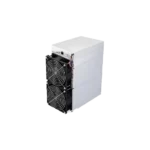Equihash
Introduced in 2016 by Alex Biryukov and Dmitry Khovratovich, mainly used for hashing cryptocurrencies, Equihash is a memory-intensive Proof-of-Work (PoW) algorithm created to enhance security and counter ASIC mining. Since the algorithm relies more on memory than computational power, giving it a competitive edge when compared to Asic Miners. The algorithm is defined by two key parameters: n, which determines the overall complexity, and k, which influences both time and memory needs. For example, Zcash uses Equihash with parameters n=200 and k=9, specifying the amount of resources required for mining.
Equihash requires miners to use GPUs with substantial memory, usually around 2 GB or more, which is a barrier for ASIC miners who typically optimize for lower memory usage. This memory-intensive approach levels the playing field by enabling GPU miners to remain competitive. Mining with Equihash involves creating hashes from the block header using a secure hash function like Blake2b. Miners aim to find specific hash values that satisfy certain conditions, and once found, these solutions are quickly verified through a fast and efficient process.
Due to its design, Equihash is particularly attractive for cryptocurrencies like Zcash, Bitcoin Gold, Komodo, and Horizen. These projects leverage Equihash's ASIC resistance and memory-hard properties to promote decentralization in mining, making it more accessible to a broader range of participants. Overall, Equihash is a robust and secure mining algorithm, ensuring that anyone with the right GPU storage and sufficient memory can mine at ease.


